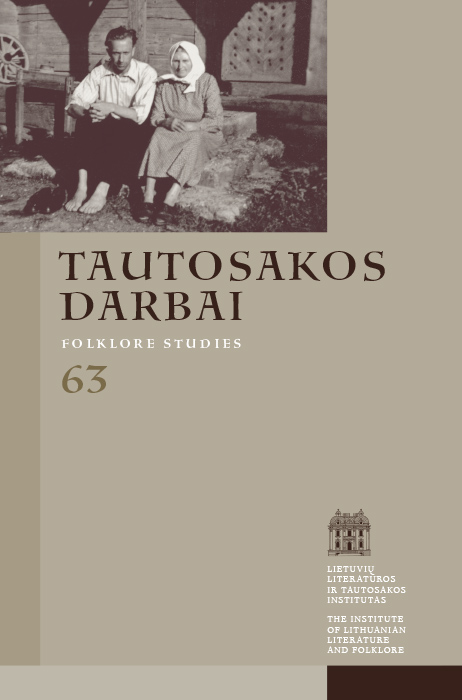Rūpesčio ir paguodos sapnai: laidotuvių apeigų refleksijos sapnų pasakojimuose
Santrauka
Mirusieji, jų apsilankymai, prašymai, perspėjimai – vyraujanti sapnų pasakojimų tema; jos variacijos tiesiogiai priklauso nuo požiūrio į mirtį, laidotuves, mirusiuosius kaitos. Straipsnyje gilinamasi į folklorinių sapnų pasakojimų ir senųjų laidotuvių apeigų sąsajas. Pasirinkta detaliau ištirti kelis neabejotinai su laidotuvių apeigomis susijusius oneirinius motyvus: draudimą kviesti mirusiuosius pasirodyti sapnuose, nes gyviesiems sunku be jų išgyventi; draudimą motinoms per daug verkti ir gailėti mirusių vaikų. Kita analizuojama apeiginė realija susijusi su mirusiųjų įkapėmis. Sapnų pasakojimuose dažnai girdima liudijimų apie mirusiųjų prašymus „atiduoti“ jiems priklausančias konkrečias įkapių dalis, kaip galiausiai paaiškėja, artimųjų išties velioniui „neatiduotas“ arba pakeistas kitomis ar kitokiomis. Išsamiau aptariamas sapnų pasakojimuose lyg dažniau už kitus įkapių objektus minimas ir su mirties kaip kelionės samprata glaudžiai susijęs mirusiųjų apavas.
Į sapnų pasakojimus šiame darbe žvelgiama kaip į neatsiejamą viso laidotuvių apeigų vyksmo dalį. Laikomasi požiūrio, kad pasakojimai, jog miręs žmogus sapnuose prašo atiduoti įkapių dalis ar kitus jam priklausančius ir reikalingus daiktus, prašo artimųjų nebesigailėti, iš tiesų yra pasakojimai apie iki galo neįvykusius ar netinkamai atliktus apeiginius veiksmus, apie sutrikdytą mirusiojo atsiskyrimą nuo gyvųjų pasaulio. O tuose pačiuose pasakojimuose nusakyti sapnuotojų atsiliepimai į mirusiųjų prašymus – ne kas kita kaip tradicijos skatinama ir palaikoma apeigų tąsa, siekiant galutinai jas realizuoti, nepriklausomai nuo to, kiek laiko praėję nuo sapnuose pasirodančio žmogaus mirties.
